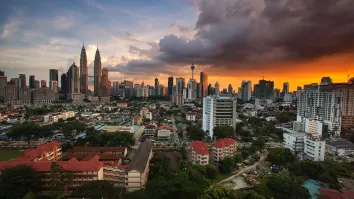
Here’s why Japan’s ‘population flight’ to regional cities is expected to accelerate
People are more likely to move to major cities in the same regions rather than Greater Tokyo.
While Greater Tokyo is undoubtedly at the centre of Japan’s solar system and therefore a primary destination of migration, over 50% of migration actually takes place within the same prefecture. This pattern is apparent when Savills compared net-migration figures from within and without the same region where the city in question is located.
Specifically, cities such as Osaka, Nagoya, Fukuoka, Sapporo, and Sendai had overall positive net-migration between 2010 and 2020 mainly due to intra-region migration. On the other hand, cities in Greater Tokyo, such as Yokohama, Kawasaki, Saitama, and Chiba had positive net-migration largely due to migration from outside of the region.
According to Savills, this indicates that while these regional cities do not have powerful forces to attract people from outside of their own regions, they are still established regional hubs and can attract migrants within the same regions. After all, given the option, many people would choose to remain in the same region where they have their social network or sentimental attachment to their hometowns . As such, for those who seek good employment and education opportunities, but prefer to stay close to their homes, moving to major cities of their regions is a valid option.
Here’s more from Savills:
One thing to note is that population growth rates vary widely even in the same city, and therefore, investors need careful assessments of submarket-level population movements. For instance, although the population of Osaka City overall is forecast to shrink 4.1% between 2020 and 2030, central wards in the city such as Naniwa, Kita, Tennoji, and Chuo are expected to see double-digit growth during the same period. In general, this urbanization trend can be attributed to the fact that more people prefer to live close to their workplaces located in central business districts, though this trend may somewhat change after the pandemic.
This urbanisation trend will likely continue as redevelopment projects taking in major regional cities will make central areas more convenient and attractive. While construction investment across Japan has started to pick up since 2010, it is a far cry from its peak in early 1990s and redevelopment has been happening in relatively limited areas of major cities (even in Tokyo, major redevelopment projects have been focusing on central areas and station fronts). This disparity across regions will likely make central submarkets more attractive and encourage urbanisation trends.
For instance, in our Regional Japanese Office Markets – December 2020, we pointed out that the Noritake project and RAYARD Hisaya-odori Park in Nagoya appear to have increased residential values beyond the station front. The Umekita Second Project in Osaka and the Tenjin Big Bang Project in Fukuoka should have a wide economic impact on the surrounding areas as well.
Additionally, the compact city vision promoted by the Japanese government could push the population to major regional cities in the future by incentivising movement to major regional hubs. Compact cities are designed to promote concentration of urban development around key transportation nodes, such as stations, to improve city functions and minimise operational costs. This is critically important because Japan’s rapidly ageing population has a major implication for the financial strength of municipalities.
Financial strength, measured as a ratio of basic financial revenue and basic financial demand, decreases as the percentage of the 75-year-old population increases. As of FY2018, the average was about 0.5 (meaning that 50% of basic financial demand must be funded through the central government tax allocation). Considering that the median percentage of 75-year-population of municipalities is forecast to increase from 16% in 2015 to 26% in 20355 , a large portion of municipalities will likely rely on the central government’s life support to finance basic needs.
This bleak forecast implies that population flight to major regional cities will likely continue and possibly accelerate in the future. A shrinking local economy will push those of working age to urban areas for job opportunities. However, they may be more likely to move to major cities in the same regions rather than Greater Tokyo.



















 Advertise
Advertise




